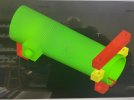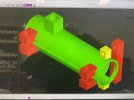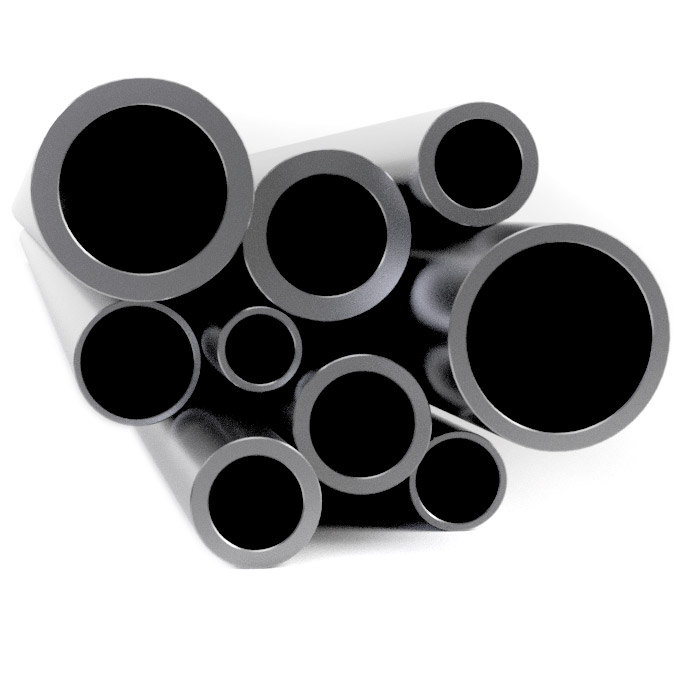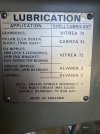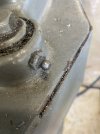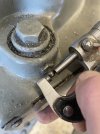KeithB
Resident Half Fast Machinist
We make a product for one of our customers out of low carbon steel that is 1-3/4" OD, 6" long, and has a wall thickness of about 1/8". The last time we ran these we used 1.75" OD x 1.25" ID steel tubing. The lowest price I could find locally was $519 for a 20' stick. The price for 1.75" solid rod was $169. A price difference of $350 for about 1/2 of the material! This is exactly why I wanted to buy a big powerful drill press.
After cutting the material to length (6-3/8" long to allow for finishing to length) Scott faced the ends to clean up and put a center drill spot to start the drill point.
The drill pictured is a 1.281" spade drill. It does not need a lead drill like a large twist drill would require, it drills best in solid material. Big Mutha is rated to drill a 2" hole in solid steel so there was no problem with a 1-7/32" hole.
I was running it at 156 RPM and 0.009"/rev feedrate. To minimize runout I drilled in halfway from each end. Even with the extra handling time it only took 6-7 minutes apiece to drill out.
By the way, our customer was real happy when I told him we would charge him half the price difference so we could both come out ahead.
Big Mutha the drill press. (The picture is a little distorted.)

Spade drill for metal
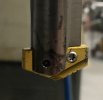
Drilling the solid to make tubing. Note the chips - unlke twist drill a spade drill breaks up the chips and makes them easy to clean up.
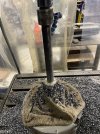
A drilled out tube and the solid rod raw material.
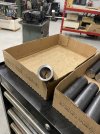
After cutting the material to length (6-3/8" long to allow for finishing to length) Scott faced the ends to clean up and put a center drill spot to start the drill point.
The drill pictured is a 1.281" spade drill. It does not need a lead drill like a large twist drill would require, it drills best in solid material. Big Mutha is rated to drill a 2" hole in solid steel so there was no problem with a 1-7/32" hole.
I was running it at 156 RPM and 0.009"/rev feedrate. To minimize runout I drilled in halfway from each end. Even with the extra handling time it only took 6-7 minutes apiece to drill out.
By the way, our customer was real happy when I told him we would charge him half the price difference so we could both come out ahead.
Big Mutha the drill press. (The picture is a little distorted.)

Spade drill for metal

Drilling the solid to make tubing. Note the chips - unlke twist drill a spade drill breaks up the chips and makes them easy to clean up.

A drilled out tube and the solid rod raw material.


